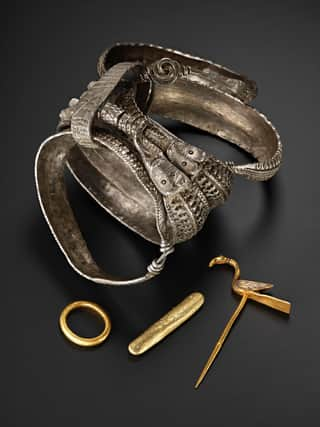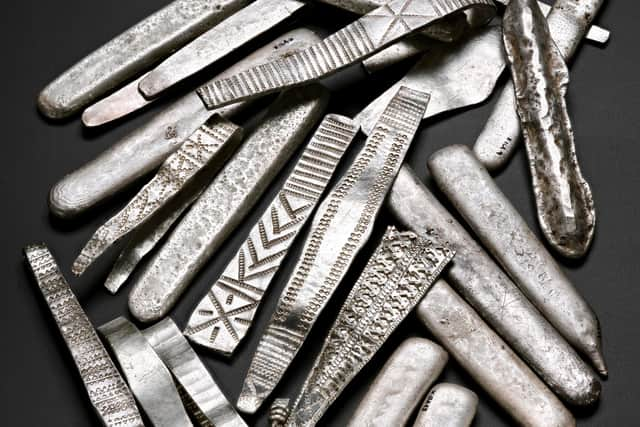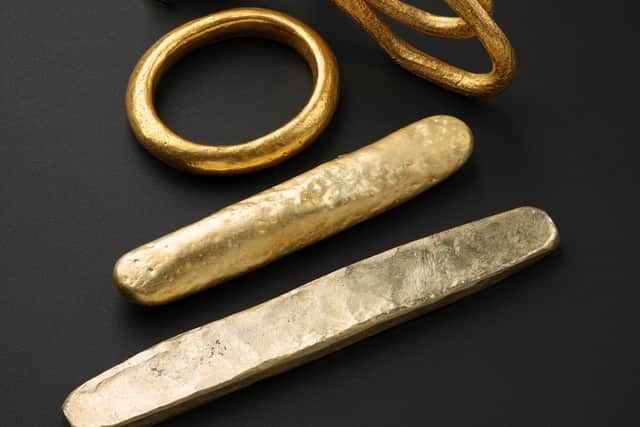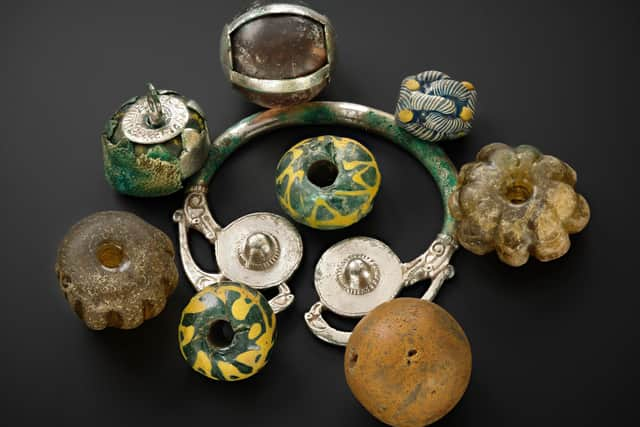Galloway Hoard: A "hugely important moment" hailed as Viking treasures unlocked for nation


The highly anticipated exhibition, Galloway Hoard: Viking-age Treasure, will open at National Museum of Scotland in Edinburgh on May 29, several months after the original exhibition date was put on hold due to the pandemic.
The treasures were discovered by a metal detectorist in Galloway in 2014 and amount to the richest collection of rare and unique Viking-age objects ever found in Britain or Ireland.
Advertisement
Hide AdAdvertisement
Hide AdBuried around AD900, the Hoard brings together a stunning variety of objects and material from silver arm rings and brooches to glass and rock crystal amulets and a tiny wooden box packed with three gold items.


Many of the items were discovered in a decorated silver gilted vessel that still had its lid, the only one of its kind.
A programme of conservation, cleaning and the painstaking removal of mud will allow the hoard to be seen for the first time in more than 1,000 years.
A spokesman for National Museums Scotland, said the Galloway Hoard was one of most significant archaeological finds of recent time which had attracted attention from around the world.


He said: “Accordingly, this exhibition offering the first chance to see this remarkable gathering of objects, gleaming for the first time as they would have been when they were buried over a thousand years ago, is a hugely important moment both for the ongoing Galloway Hoard project and for National Museums Scotland as a whole.”
It is now known that the hoard was buried in four distinct sections with the top layer containing a parcel of silver bullion and a rare Anglo-Saxon cross.
Underneath lay another parcel of silver bullion – twice as big as the first – which was wrapped in leather.
On the third layer, a cluster of four elaborately decorated silver ‘ribbon’ arm-rings were found bound together. On separating the pieces of jewellery, a small wooden box containing three items of gold was discovered.


Advertisement
Hide AdAdvertisement
Hide AdThe fourth section contained a lidded, silver gilt vessel that was wrapped in layers of textile and packed full of carefully-wrapped objects – from beads to pendants and a rock crystal jar - that appear to have been curated like relics or heirlooms.
A £1m research programme into the collection will run over the next three years in collaboration with The Arts and Humanities Research Council and Glasgow University.
It is hoped the research can date the items and identify their places of origin - thought to range from Ireland to the Byzantine empire and possibly beyond.
A major aim will be to understand how and why people assembled and collected hoards during the Viking age and what purpose they served.
Some items are too fragile to be displayed and will go on show in 3D form.
After showing in Edinburgh, the exhibition will open at Kirkcudbright Galleries on October 9 and Aberdeen Art Gallery on July 30, 2022.
The exhibition is free but tickets must be booked ahead on the NMS website in order to limit numbers entering the museum at one time.
A message from the Editor:
Thank you for reading this article. We're more reliant on your support than ever as the shift in consumer habits brought about by Coronavirus impacts our advertisers.
If you haven't already, please consider supporting our trusted, fact-checked journalism by taking out a digital subscription.
Comments
Want to join the conversation? Please or to comment on this article.
